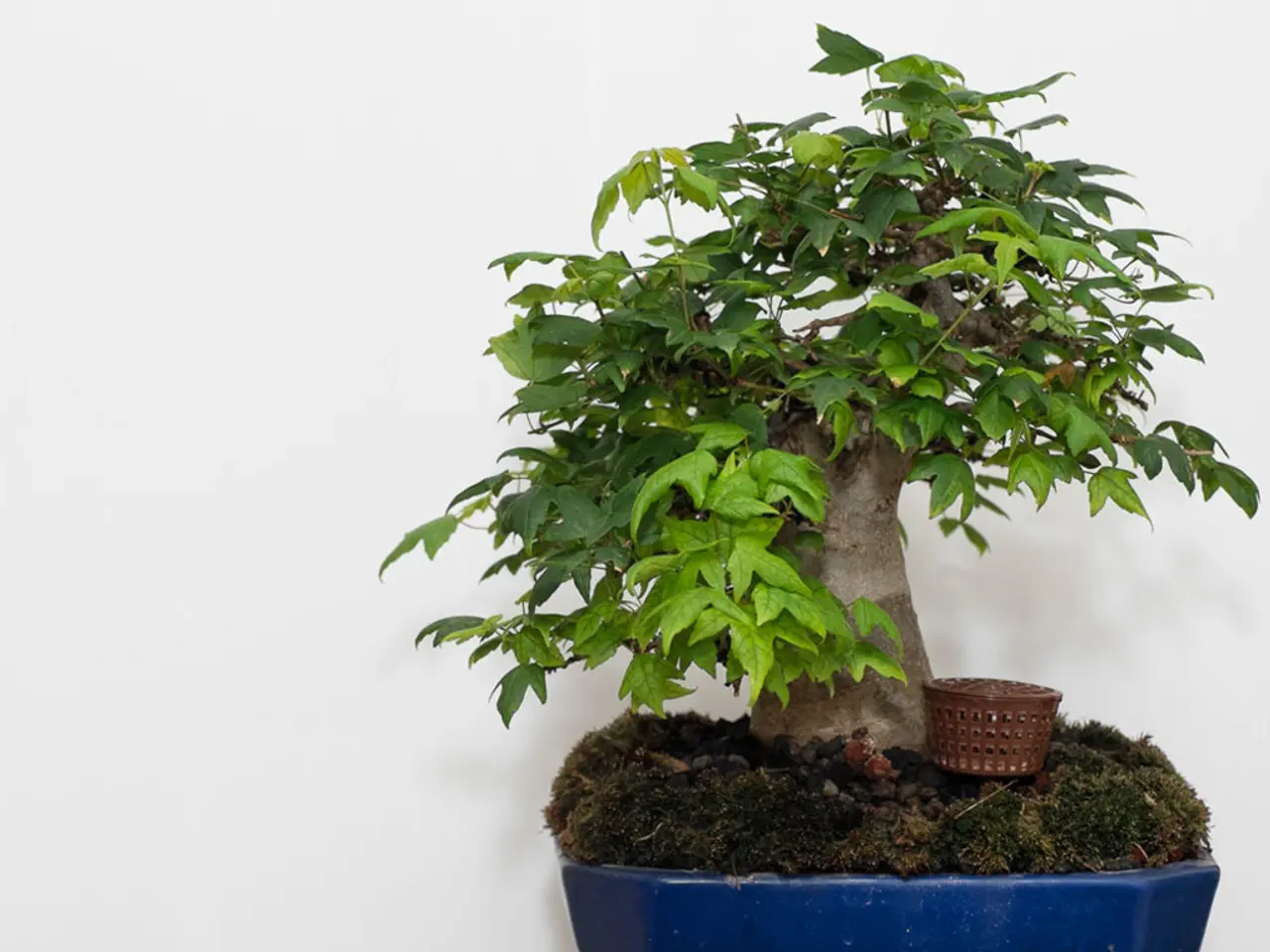Fundamentals of Bonsai Shaping: Achieving Harmony through Balance, Scale, and Dynamics
Cultivating Harmony in Miniature: The Art of Bonsai
The art of bonsai, a centuries-old tradition, transforms modest plants into intricate, show-quality masterpieces. This delicate process demands patience, dedication, and consistent care, with timelines varying from 5 to 50 years or more, depending on species, climate, and skill level.
Bonsai is not just limited to trees. The principles can be adapted to other plants, like shrubs or succulents, by understanding and working with the plant's natural growth patterns and structural characteristics to create visually appealing compositions.
Understanding visual weight and focal points is crucial. It allows you to direct the viewer's attention and create a sense of balance and harmony within the tree's design. By carefully wrapping and bending the branches, artists can coax the tree into a desired shape, creating a sense of fluidity and movement.
This delicate process requires patience, precision, and a deep understanding of the tree's anatomy and growth patterns. Wiring, an art form that requires a gentle, nuanced touch, is used to sculpt the tree's branches, creating a harmonious balance between thickness and delicacy.
To achieve balance, proportion, and movement in a harmonious composition, bonsai artists consider key elements such as visual pathways, focal points, negative space, rhythmic repetition, and dynamic tension. Proportion is maintained by ensuring the proper size relationships between the tree’s parts and the pot. Balance is achieved through either symmetrical or asymmetrical arrangements, where visual weight is distributed deliberately. Movement is introduced by shaping branches and trunk to curve, twist, or lean in ways that suggest natural growth under environmental influences like wind or gravity.
Harmony and contrast are achieved by combining elements that complement each other while providing visual interest, such as contrasting thick and thin branches or rough and smooth textures. Silhouette shaping involves carefully pruning and wiring to define the tree’s overall outline with purposeful curves and tapering to reflect a mature tree's natural form. The use of negative space allows gaps between branches or foliage to balance dense areas, enhancing overall harmony and giving the bonsai room to "breathe".
Refining your bonsai composition involves carefully considering the placement and arrangement of individual elements, such as branches, foliage, and roots, to create a visually appealing and balanced design. Introduce subtle imperfections and nuances to your bonsai tree's design to avoid an overly perfect or artificial appearance, embracing its natural character and subtle asymmetries.
While many tree species can be bonsai-ed, some, like Ficus and Juniper, thrive in containers, while others, like oak and beech, struggle due to specific growing requirements and characteristics. Wiring for shape is a critical and transformative step in bonsai styling, enabling artists to precisely control and refine the tree's silhouette. When done correctly, wiring can elevate a bonsai tree from ordinary to extraordinary, revealing the hidden beauty within.
Read also:
- Quarterly Review of the Biotechnology and Pharmaceutical Industries: A Look Back at Q2 2025
- Summer Fruit Stars of 2025: Blueberries, Tomatoes, and Cherries Lead the Charge
- A renowned culinary artist opted to dine at this establishment:
- Expanding Plant-Based Protein Market Projected to Reach US$30.8 Billion by 2034, Exhibiting a Compound Annual Growth Rate (CAGR) of 7.1%








